The extremely rare 1852 Adelaide One Pound struck in the first production run (Type I Adelaide Pound).
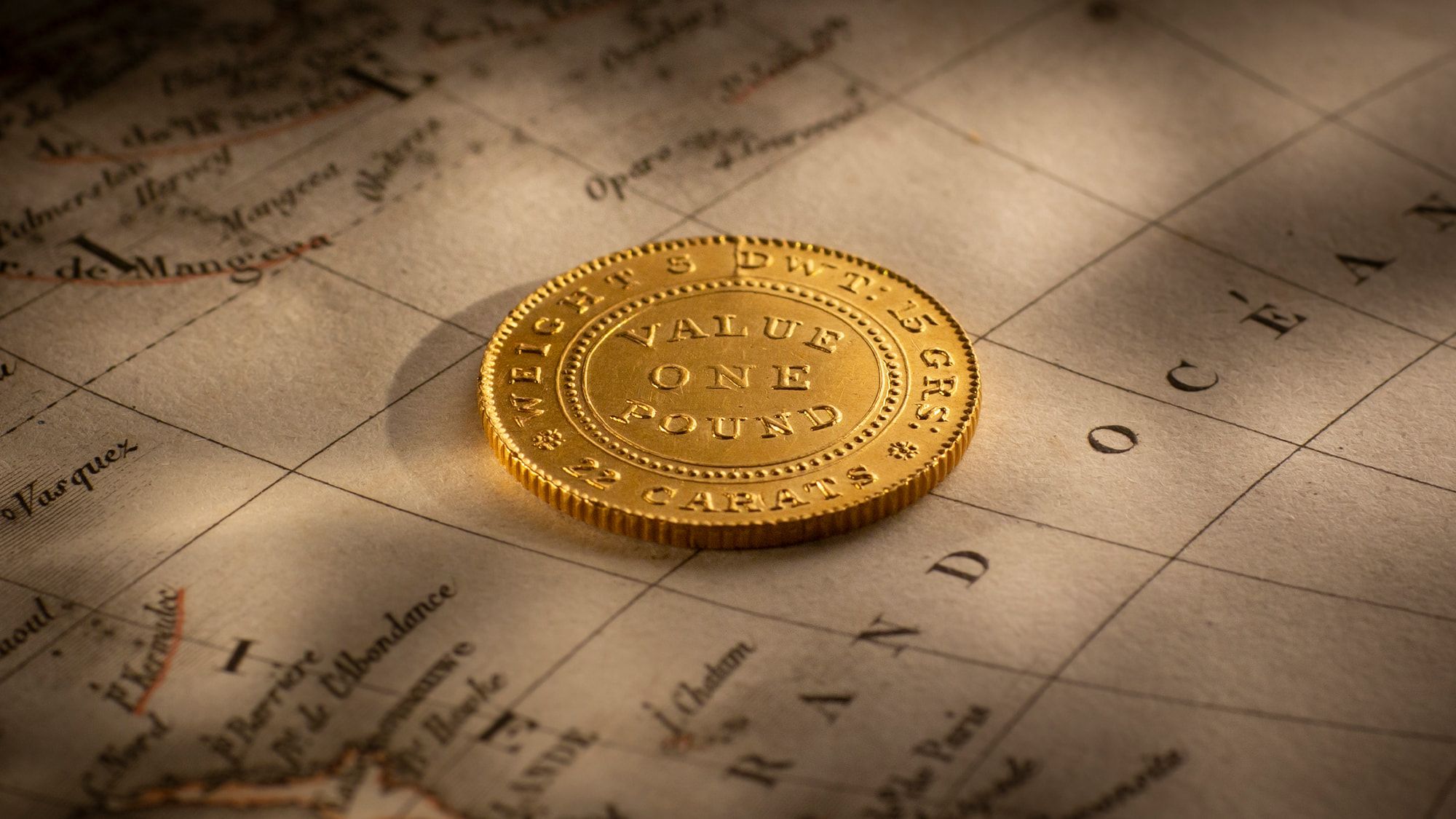
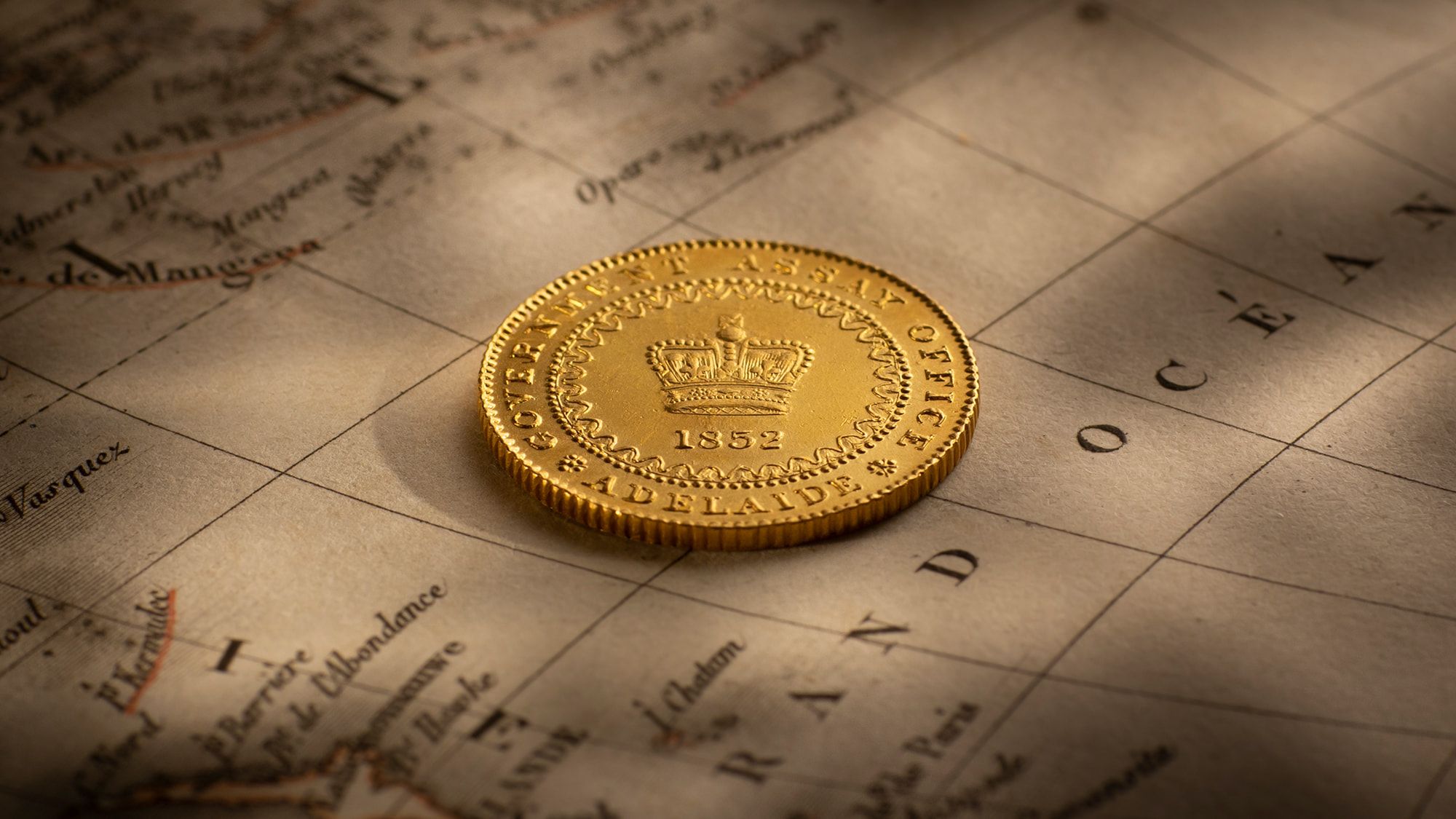
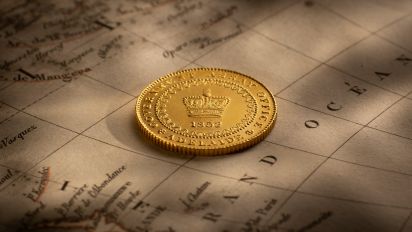
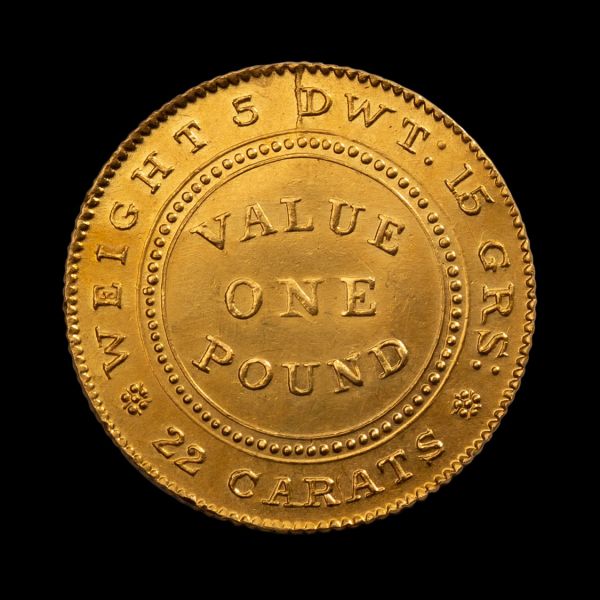
Uncirculated 1852 Adelaide Pound Type I, one of three known at this supreme quality level. We comment on the strength in the edges and denticles and lettering. And the fabulous fields.
Australia’s first gold coin, a One Pound, was struck on 23 September 1852 at the Government Assay Office in Adelaide, South Australia. The first production run of Adelaide Pounds, used an obverse die with a crown and a reverse die with a simple, elegant beaded inner circle. (Shown above)
During the first run, pressure was applied to the edges to ensure that the denticles and the legend were strong. About fifty coins were produced before a crack developed in the die, forcing an interruption to production and the hasty preparation of a replacement die.
Feeling the strain to resume production, Joshua Payne opted for a simpler version of the reverse die, the legend and value in plain lettering. He also changed the design of the inner border, duplicating that already in place on the crown side.
Production was resumed with the second die and a further 24,000-plus coins minted, referred to as the Type II One Pounds.
By using two different dies, Joshua Payne clearly distinguished between those coins struck in the modest first run. And those from the more substantial second run.
And in so doing created a rarity of the highest order. The Gold One Pound struck during the very first production run of the nation's first gold coin, better known as the Type I Adelaide One Pound.
What we know today is that less than forty Type I Adelaide One Pounds are in collector’s hands. And perhaps six times that figure of the Type II examples. Both rare. But the Type I One Pound excruciatingly rare. And this example, one of the finest of them all.
The enormity of this offer cannot be overstated. This coin was never given kid gloves treatment during the production process. It was struck in what can only be described as a factory, hammered out and hurled down an assembly line, more than likely into a barrel or bucket.
How this coin survived the production process, and more than one hundred and seventy years later still be in a pristine original state is impossible to fathom.
This is a unique opportunity to acquire an inspiring example of Australia's very first gold coin, offered at a spectacular quality level.
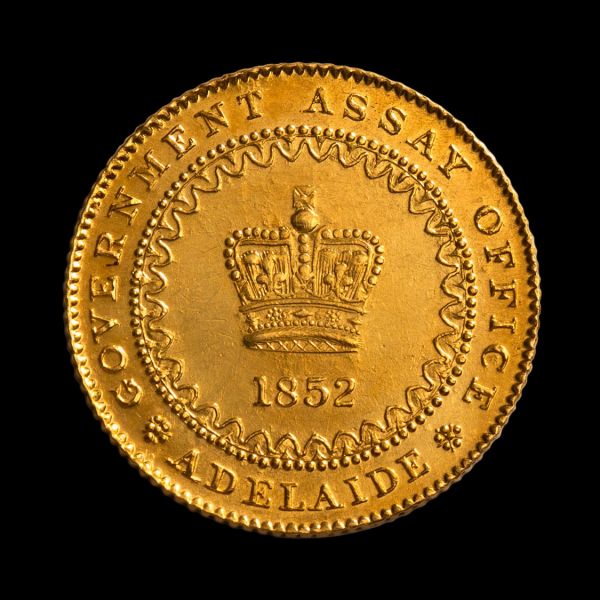
Uncirculated 1852 Adelaide Pound Type I, one of three known at this supreme quality level. Exceptional strength in the edges, legend and the crown. And lustrous fields.
The 1852 Adelaide Pound holds a very special place in Australia's history as the nation's first gold coin. It was minted in November 1852 at the Government Assay Office, Adelaide.
The Assay office had opened nine months earlier on 10 February 1852, its sole purpose to assay gold nuggets brought from the Victorian goldfields and to re-shape them into ingots.
No minting expertise was required in the casting of the ingots. While they conformed to a shape and style, they were crude and rough and ready and each had its own unique shape and size depending on the weight of gold assayed.
Nine months later, following agitation from Adelaide’s business community, legislation was passed that authorised the Government Assay Office to strike gold coins.
Suddenly precision was required. The design was intricate, created by colonial die-sinker and engraver, Joshua Payne. So, it was always going to be a tough ask for a factory to start churning out currency to a defined weight and design.
The intention was that the Adelaide Pound would circulate. And be used in every day commercial transactions, as part of a grand plan by South Australia's Governor, Sir Henry Young, to stimulate his state's ailing economy.
The coin was never given kid gloves treatment during the production process.
It was struck in what can only be described as a factory, hammered out and hurled down an assembly line, more than likely into a barrel or bucket.
How this particular coin survived the production process, and more than a century and a half later still be in a glorious original state is almost impossible to fathom.
© Copyright: Coinworks